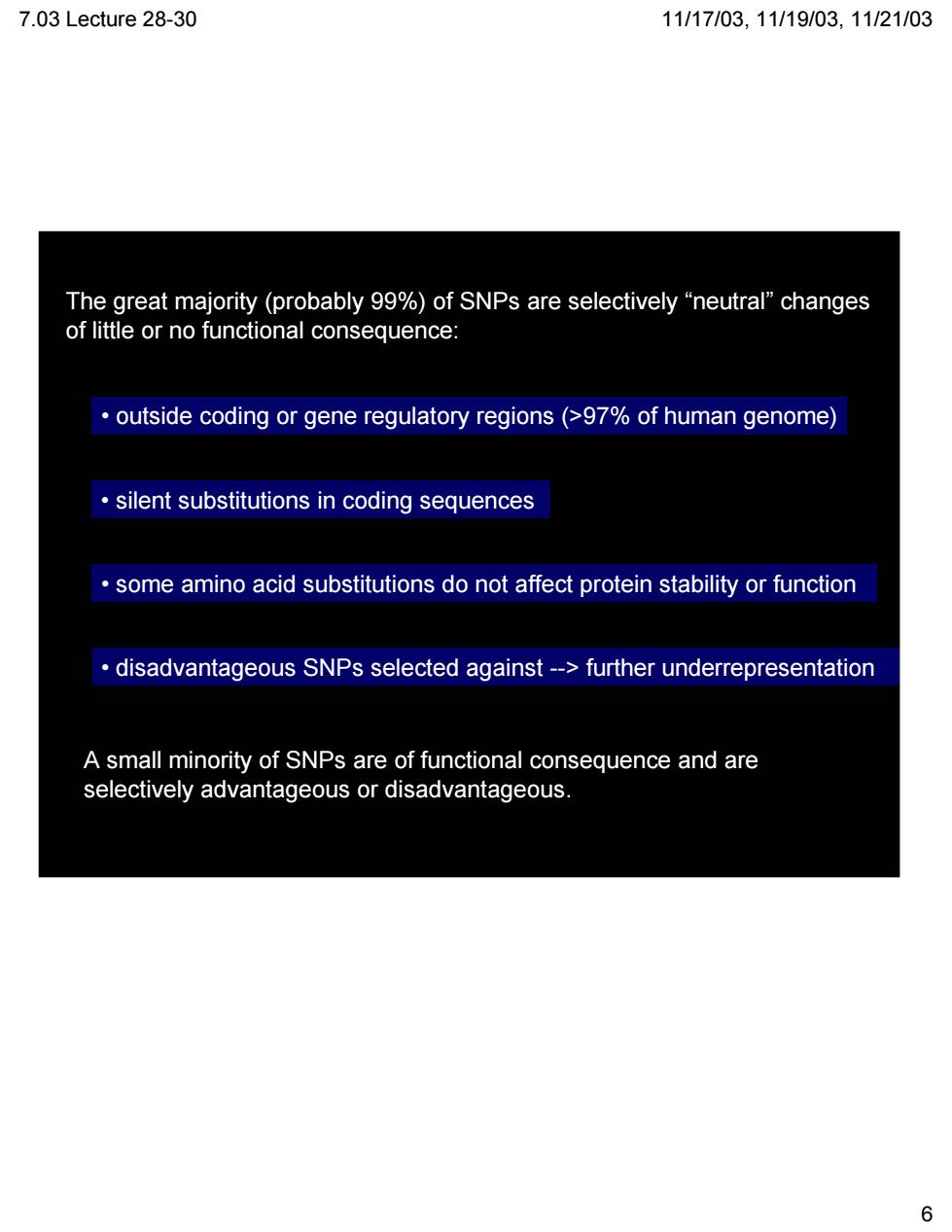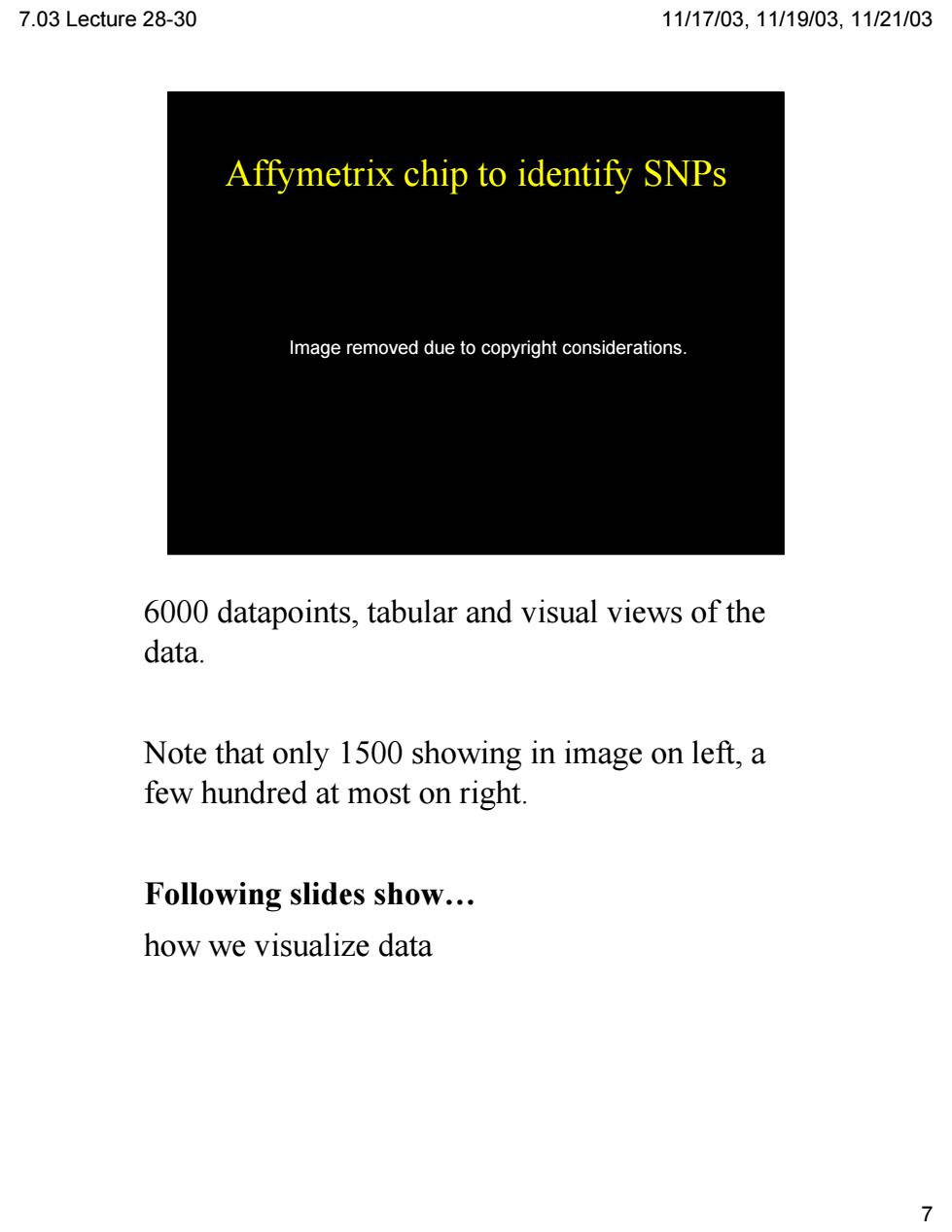
7.03 Lecture 28-30 11/17/03,11/19/03,11/21/03 The great majority (probably 99%)of SNPs are selectively "neutral"changes of little or no functional consequence: outside coding or gene regulatory regions(>97%of human genome) silent substitutions in coding sequences some amino acid substitutions do not affect protein stability or function disadvantageous SNPs selected against-->further underrepresentation A small minority of SNPs are of functional consequence and are selectively advantageous or disadvantageous. 6
7.03 Lecture 28-30 11/17/03, 11/19/03, 11/21/03 6 The great majority (probably 99%) of SNPs are selectively “neutral” changes of little or no functional consequence: • outside coding or gene regulatory regions (>97% of human genome) • silent substitutions in coding sequences • some amino acid substitutions do not affect protein stability or function A small minority of SNPs are of functional consequence and are selectively advantageous or disadvantageous. • disadvantageous SNPs selected against --> further underrepresentation

7.03 Lecture 28-30 11/17/03,11/19/03,11/21/03 Affymetrix chip to identify SNPs Image removed due to copyright considerations. 6000 datapoints,tabular and visual views of the data. Note that only 1500 showing in image on left,a few hundred at most on right Following slides show... how we visualize data 7
7.03 Lecture 28-30 11/17/03, 11/19/03, 11/21/03 7 Affymetrix chip to identify SNPs 6000 datapoints, tabular and visual views of the data. Note that only 1500 showing in image on left, a few hundred at most on right. Following slides show… how we visualize data Image removed due to copyright considerations